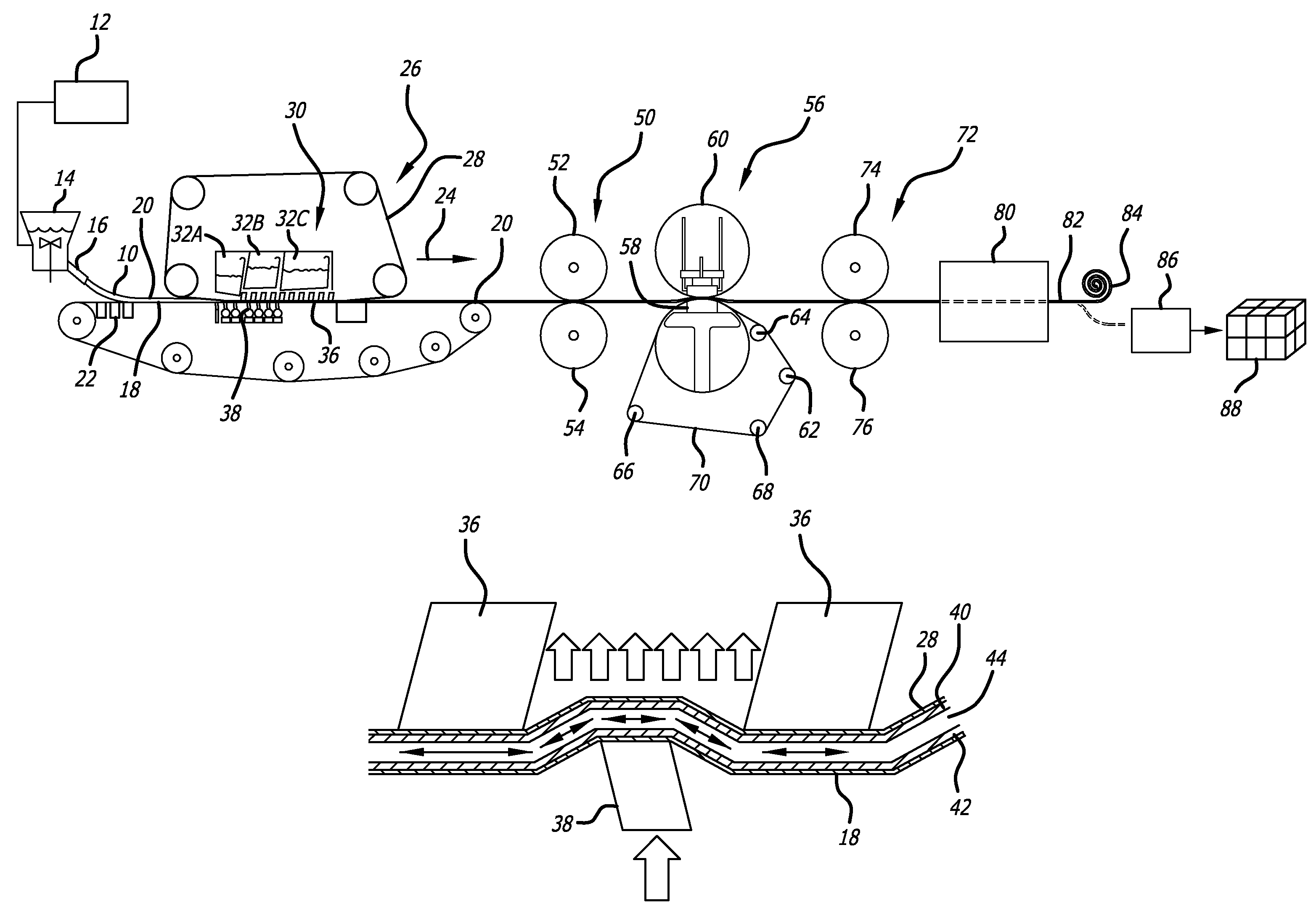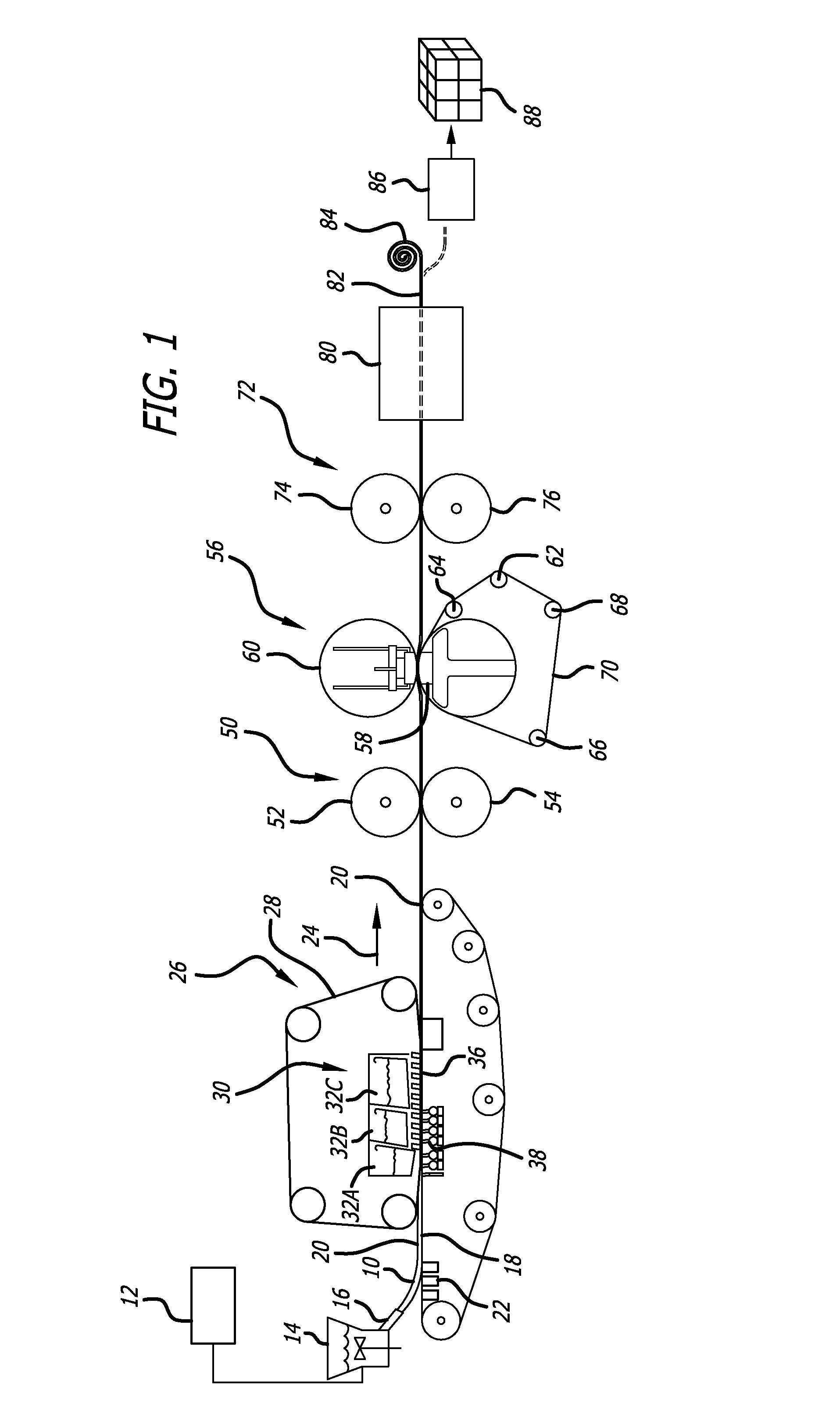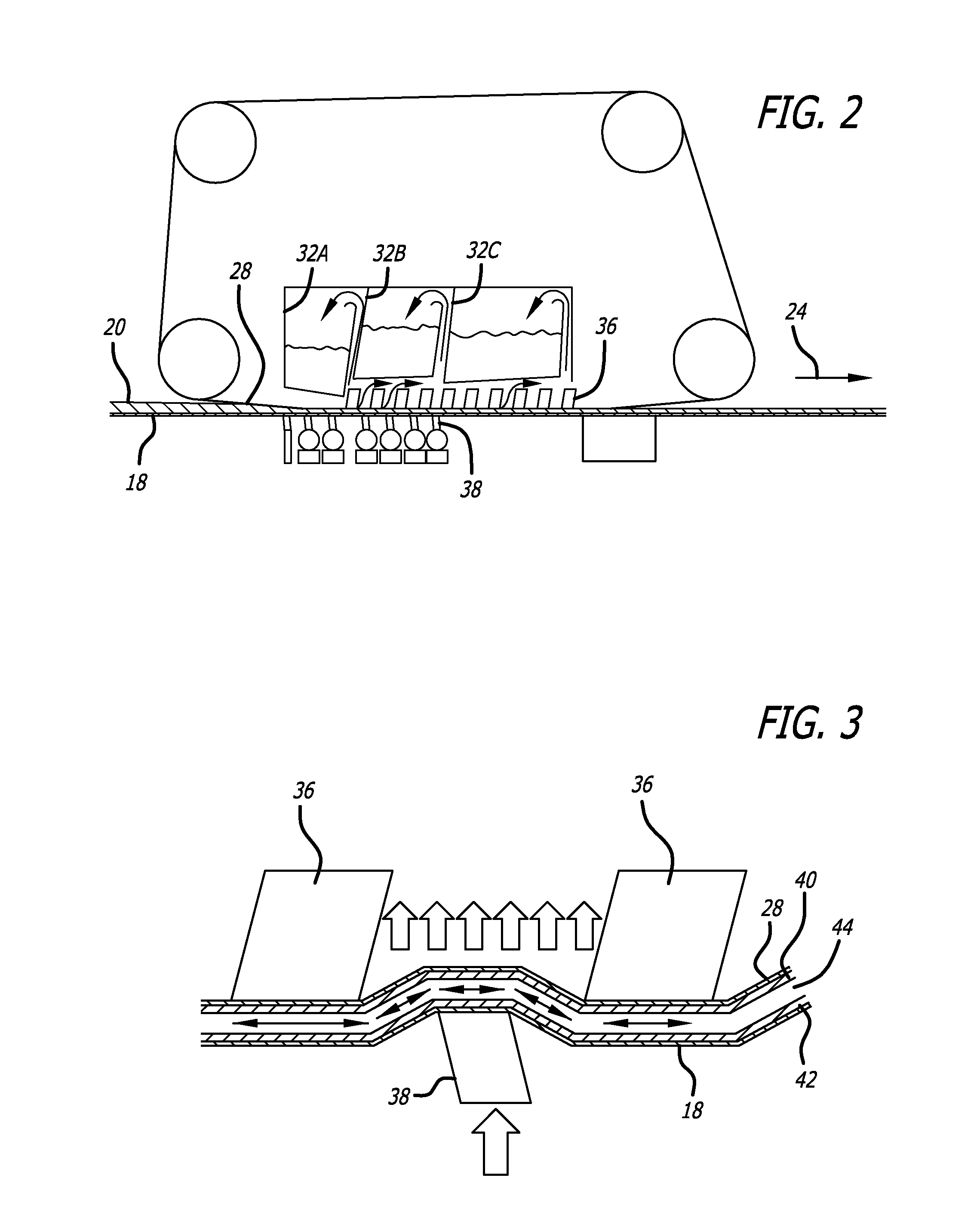Methods and apparatus for forming fluff pulp sheets
a technology of pulp sheets and methods, applied in the field of wet forming, can solve problems such as reducing the quality of fluff, and achieve the effects of reducing the number of fiber-to-fiber bundles, low shred energy, and low variability in weigh
- Summary
- Abstract
- Description
- Claims
- Application Information
AI Technical Summary
Benefits of technology
Problems solved by technology
Method used
Image
Examples
Embodiment Construction
[0026]FIGS. 1-3 show with schematic figures one particular process in accordance with the present invention for forming fluff pulp sheets. In accordance with the process depicted in FIG. 1, a pulp slurry 10 is delivered from stock container 12 to a headbox 14. The stock container 12 holds the processed pulp slurry after it has been prepared utilizing known techniques in the art. As noted above, the pulp slurry 12, also referred to as “pulp stock,” may typically include cellulose fibers such as chemically digested wood pulp fibers as its main component which is suspended in water or a water-based liquid solution. The slurry may also include as a minor component, mechanical wood pulp and synthetic or other non-cellulose fibers, chemical surfactants and other elements known in the paper making art. Preferably, but optionally, the pulp slurry has undergone a bleaching process to create white fluff pulp stock. The pulp slurry exits the headbox 14 through an opening of adjustable height c...
PUM
| Property | Measurement | Unit |
|---|---|---|
| thickness | aaaaa | aaaaa |
| shear forces | aaaaa | aaaaa |
| concentration | aaaaa | aaaaa |
Abstract
Description
Claims
Application Information
 Login to View More
Login to View More - R&D
- Intellectual Property
- Life Sciences
- Materials
- Tech Scout
- Unparalleled Data Quality
- Higher Quality Content
- 60% Fewer Hallucinations
Browse by: Latest US Patents, China's latest patents, Technical Efficacy Thesaurus, Application Domain, Technology Topic, Popular Technical Reports.
© 2025 PatSnap. All rights reserved.Legal|Privacy policy|Modern Slavery Act Transparency Statement|Sitemap|About US| Contact US: help@patsnap.com



